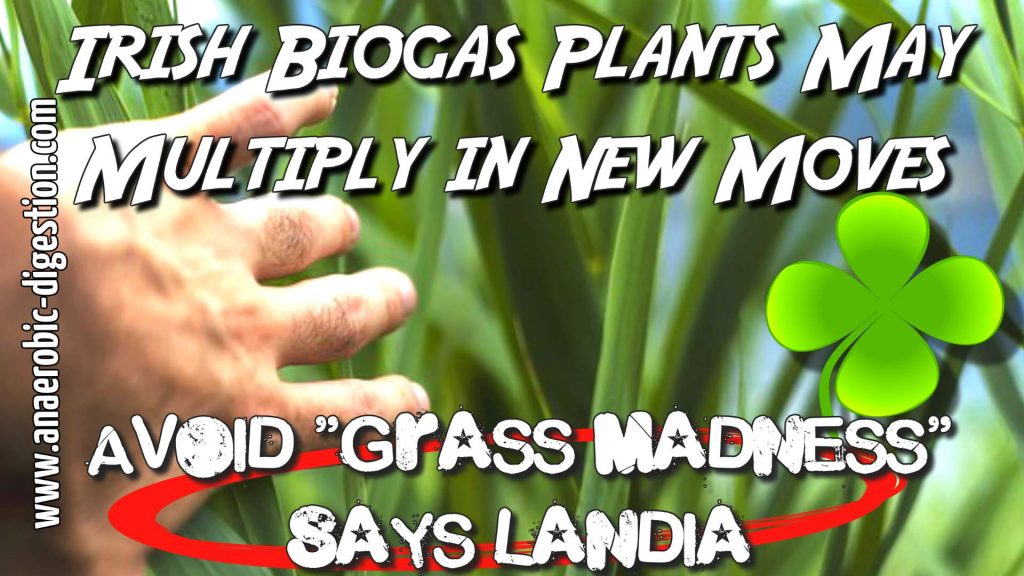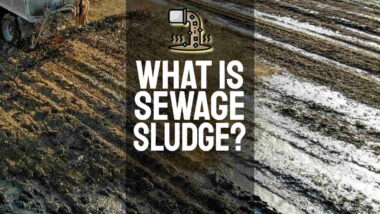Irish biogas plants if fully developed, starting now, can help Ireland achieve its Renewable Energy Targets. Read on to find out how!
Introducing the Potential for Irish Biogas
Ireland is the fastest-growing economy in the European Union, and its biomass resources are immense. As such, it aims to become energy-independent and needs reliable and efficient biogas plants from a manufacturer with experience in plant engineering. Biogas is a renewable fuel with low carbon emissions. Ireland can help the EU achieve its energy targets by using biogas, and this industry can provide jobs and revenue for Ireland. It can also help the country reduce its greenhouse gas emissions and slurry odours.
Diageo, a leading Irish beverage maker, wants to source all its power from renewable sources by 2030. It also cut its carbon footprint by 50% recently. In the meantime, biogas can help the agrifood sector meet its sustainability targets, and Diageo can be part of that change. By using biogas, the company will save on energy bills and GHG emissions. This will support the local economy, and it will invest in the sector.
Ireland Could Lead in Biomethane Production
Ireland has the potential to be a leader in biomethane production although it has so far been slow to develop AD plants. It is estimated that with rapid expansion biomethane could replace 20% of the country's current demand for natural gas by 2030. Currently, the country has only 16 biogas plants, 15 of which use anaerobic digestion technology. While the industry is still small, it has significant potential for expansion in the coming years.

Government Biogas Sector Development Programme
The government is introducing a programme to encourage the development of biogas plants in the republic. The government is providing subsidies for a number of projects. One of the main incentives for developers is the ability to produce biomethane on their own farms. This will help reduce the need for imported natural gas, which is costly financially, and also for the environment.
Biogas production will also help Ireland achieve its renewable energy targets. This will save energy costs in the long run and support the rural economy.
Controversial Irish Biogas Plant
A controversial biogas plant near Tullamore, County Offaly, is currently under review in the High Court after Grafton Group PLC filed a case against the approval of the project by An Bord Pleanala. Strategic Power Projects, an Irish renewable energy developer, wants to build a biogas plant near the town of Tullamore, 2.2km from Tullamore. This facility will convert organic waste into biogas and produce fertiliser. This project was initially rejected by Offaly County Council, but Strategic Power appealed the decision and was granted permission for the project by the planning board.
High Gas Prices Mean Ireland Must Reduce Importing Natural Gas
In addition to being a renewable fuel, biomethane can help Ireland to meet its obligations with regard to carbon emissions. It can also reduce its dependency on imported natural gas, which is crucial for the sustainability of the national gas network. The EU's Farm to Fork Strategy has identified biomethane as a key tool in decarbonising the energy and agriculture sectors of Europe. The European Commission has identified Ireland as the country with the greatest potential for biomethane production per capita.
Potential Capacity for Biomethane Production is High
Biogas plants in Eire could have a large capacity to produce renewable energy. The average biogas plant generates about 12Mm3 of biogas per year, and each unit is capable of valorizing 30GWh of energy. The electricity generated by the Irish biogas plant is distributed in the grid and used in various industries. The heat generated by biogas can be reused in a belt dryer and evaporator. This would be useful to farmers in such a wet country for drying grain crops etc.
Biogas Plants are Cost-Effective at Energy Prices in 2022
Biogas plants are highly cost-effective now that energy prices have risen so much, and can provide renewable energy for households and businesses. The levelised cost of biogas generation varies with the type of feedstocks used and the sophistication of the plant. Nonetheless, biogas is now much cheaper than fossil fuels and can also reduce GHG emissions.
In addition, it is environmentally friendly and a great alternative to fossil fuels. So, Ireland should take steps to develop its biogas industry as a matter of urgency.
Climate Change Reduction from the Anaerobic Digestion Process
Biogas plants can contribute to combatting climate change by reducing greenhouse gas emissions and methane emissions, plus improving air quality, and reducing food waste.
They can also provide a way to manage domestic and commercial waste and food waste and prevent it from ending up in landfills.
Reducing Risks of Disease and Global Temperature Rises
Recycled organic waste (after pasteurisation) reduces the risk of disease and when done according to guidelines protects water bodies. It can also act as a replacement for synthetic fertilizers. The digestate can be used to fertilize gardens, pastures, and other areas.
Summary
In the Irish Republic, biogas plants are beneficial to rural and poor communities because they help improve the environment. Almost any organic waste can be converted into biogas, and from there into biomethane.
Because biogas can easily be zero-emission, it is also helpful to the global environment. It can help curb greenhouse gas emissions thereby reducing these harmful gases in the atmosphere.
When we first posted this page in November 2018, we said:
Irish Biogas Plants May Multiply in New Moves But Avoid “Grass Madness” Says Landia
Irish biogas plants: Construction may accelerate if new moves to kick-start the Irish AD industry on beef and dairy farms are successful. But, “avoid grass madness,” says AD equipment expert Landia.
Landia make the point that ruling out higher energy crops such as growing maize would result in a need for much larger more expensive AD plants when by choosing a higher gas-yield feedstock these costs could be drastically reduced.
Background to Irish Biogas Progress So Far
Ireland has been very slow to adopt anaerobic digestion and biogas technology, and due to the fact that Ireland appears to be heading toward failing to comply with its forthcoming Climate Change emissions Reduction Target, a rapid switch to biogas now could save Ireland from massive fines.

Looking at this from another viewpoint would bring the conclusion that if Ireland does not decarbonise, its present envied reputation as a green producer of food and drink products will be lost.
A big push to increase Irish Biogas Plants is both possible and could provide the good results which are now well-proven elsewhere.
Action Being Taken to Promote Irish Biogas Plants by Food and Drink Companies in Alliance with Farmers in Ireland
 Some large influential food and drink companies are aligning with farmers in Ireland to press the government to drive moves to increase agriculture-based biogas production rapidly building more Irish Biogas Plants. This proven technology which is available right now could allow the nation to meet renewable energy targets. But, it is not happening. That these influencers say, this is principal because Ireland lacks a subsidy scheme for producing biogas energy.
Some large influential food and drink companies are aligning with farmers in Ireland to press the government to drive moves to increase agriculture-based biogas production rapidly building more Irish Biogas Plants. This proven technology which is available right now could allow the nation to meet renewable energy targets. But, it is not happening. That these influencers say, this is principal because Ireland lacks a subsidy scheme for producing biogas energy.
Experience in most other EU nations has shown that some form of government subsidy is needed to provide enough “push” to get any new national biogas industry started.
Most experts agree that probably the best way for governments to subsidize anaerobic digestion plants is through a government-backed Renewable Heat Incentive scheme (RHI).
According to the Irish Times, experts are making the point that an RHI for Ireland would seem to be an inevitable requirement to make it possible for farmers to become ‘energy farmers’. That is, to put their crops into a biogas plant, without incurring risks to maintaining their bottom line, which most consider being just too onerous.
A grouping of Ireland’s leading food and drink companies, led by Diageo, is supporting a big move into Irish agricultural production of biogas in Irish Biogas Plants.
They say large-scale adoption of Irish anaerobic digestion would be an emissions-free energy source. It would also use the waste from agricultural activities, and energy from crops.
Large Gas Consumer Diageo Leading the Way for Irish Biogas Plants
According to the Irish Times, Diageo, one of the State’s biggest gas consumers, mainly through St James’s Gate brewery in Dublin, and the Dairygold co-op, are leading the way:
“Ireland, with its large agriculture sector, is considered the EU member state with best potential to exploit biogas. But a “renewable heat incentive” (RHI) to support this sector is absent. It’s urgently required, according to those prepared to back the green technology – Ireland is the only EU country without a RHI.”
“Costello, who is from north Co Galway, cites the case of west of Ireland beef farmers.”
“Thousands of them are not making money. They don’t want to change their farm over to bushes or forestry. It goes against the Irish psyche.”
By allowing grass silage to be sold for biogas production,
“they remain farmers, the land is green, and the infrastructure is largely in place already. Farmers are helping to decarbonise… and, in the process have a new income stream.”
Biogas comes with benefits: it’s a renewable energy source that farmers can help generate and it reduces CO2 emissions associated with farming, which are responsible for a third of Irish greenhouse gas (GHG) emissions.” …
Anaerobic Digestion Plants – Cost Effective According to the Irish Times Article
“This [biogas] is the most cost-effective solution, and maximises the potential benefit (commercial and environmental) of Irish Biogas Plants for farmers,”
explains Liam Reid Diageo’s corporate relations director.
“Diageo want to be first movers with this proven technology in other European countries. It could unlock a sustainable solution for farm waste management and provide a double benefit in terms of reducing GHG emissions in farming alongside displacing fossil fuels.”
According to the Irish Times, Biogas can be upgraded to natural gas quality and injected into the grid or used as vehicle fuel. It has the potential to generate 3,000 permanent jobs in rural Ireland by 2050 and 5,000 jobs in the construction phase.
Again, according to the Irish Times: Hub projects are underway in Mitchelstown, Co Cork (beside Dairygold’s dairy processing facility), in Louth/Cavan and another Munster location. Others are at the planning stage.
A constant focus for Simon Shannon, Diageo supplier performance manager, is on energy efficiency and sustainability. Biogas offers a huge opportunity for the agrifood sector, he says, in parallel with helping Diageo to meet its sustainability targets and reduce GHG emissions.
In 2012 Dairygold installed an AD at its Mitchelstown complex, and according to the Irish Times:
“The technology used was a first for the dairy industry and it is the largest above ground digester of its type in the world. The digester generates biogas from dairy processing waste water. The biogas is burned in boilers and supplies up to 6 per cent of the heat demand for the production site. This displaces natural gas use and saves over 3,000 tonnes of greenhouse gas emissions annually.”
A Future Vision for Irish Biogas – A Republic of Ireland RHI?
According to the Irish Times in 2018:
“Currently the options for large scale renewable heat in Ireland are limited and do not work with our energy infrastructure. Based on our positive experience with self-generated biogas, we support the inclusion of AD and biomethane (upgraded biogas) grid injection in the proposed Irish RHI.”
FitzGerald added:
“This is essential to kick-start the biogas industry and the switch-over to renewable gas in Ireland. The GNI initiative to support biomethane grid injection will provide an option to further reduce our processing carbon emissions.”
Relying on HGV transport for milk collection and haulage of farm inputs, it sees potential in a move to biomethane to further reduce emissions.
“As a co-operative, we are keenly interested in the potential for AD at farm level to reduce farm emissions, provide an alternative income stream for farmers and improve nutrient management.”
Those in the emerging Irish Biogas Plants/ biogas sector hope it gets their fair share; enough to scale up a proven energy industry – what’s needed, they underline, is a lot less than those threatened EU fines arising from missed renewable energy targets. via Irishtimes.com
PRESS RELEASE:
(November 2018)
Grass Madness for Ireland’s Proposed new AD plants?
Digester mixer manufacturer Landia (AD Pumps etc.) says that Ireland’s Green Party’s statement about the use of grass as a feedstock fails to address best practices in the development of AD plants.
According to Landia’s Paul Davies, the reason that the Irish Government has difficulty in promoting the use of grass is that it is not directly interchangeable with maize as a feedstock.
“The industry understands Ireland’s Green Party’s concerns that the proposed new series of Gas Network Ireland AD plants should be thought through properly”, he said.
“But stating that ‘encouraging the use of grass as a source is madness” is something we’d agree on, but for totally different reasons – because the point seems to have been missed that grass has a considerably lower gas value than maize – so, much higher percentages of it would be needed – leading to the requirement for much higher levels of investment in equipment that would of course make the plants so much more expensive to build”.
He added: “We have to agree with the response to Pippa Hackett (Ireland’s Green Party spokesperson) from the World Biogas Association (WBA) that the growth of energy crops as part of a rotation can also help, not degrade soils – and that the nutrient-rich biofertilizer gained from well-managed AD plants is usually of a huge benefit to farmers, significantly reinvigorating land.
“The WBA are right in saying that by producing nutrient-rich digestate biofertilizer through AD, the use of artificial, fossil-fuel-derived fertilizers can be greatly reduced”.
For more information about Landia pumps and anaerobic digestion equipment click here.
[This page was originally posted in November 2018. Last updated in August 2022.]







